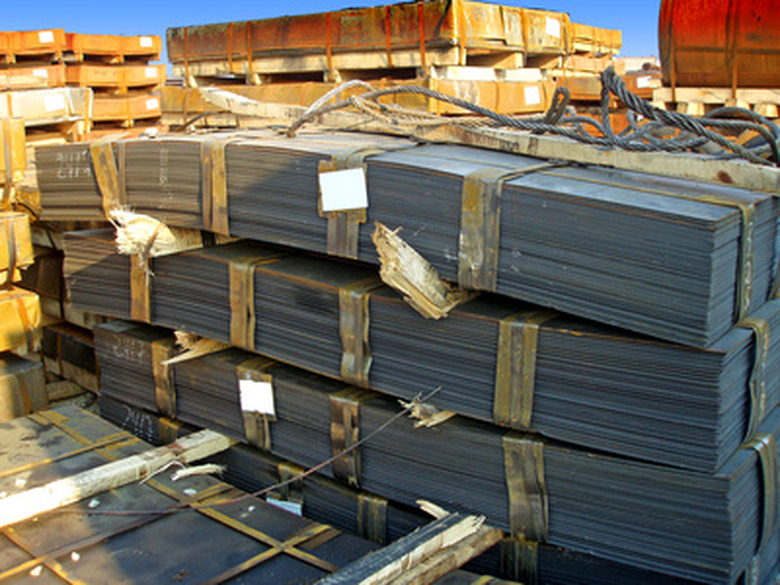Properties Of Q345B Steel For Plate Material
Q345B steel is a Chinese standardized low alloy, medium tensile strength steel made with a hot-rolling process, and is used for a number of manufacturing purposes. It is a steel with less than 0.2 percent of its composition made up of carbon, less than 0.55 percent of its composition made of silicon and several impurities (mostly sulfur, chromium and nickel). This particular grade of steel is a 'general purpose' manufacturing steel, used for sheet metal, light structural elements of household goods, and similar uses where it won't be used as a major structural component.
Formability and Weldability
Formability and Weldability
The major benefit of this grade of steel is its mild temper. It's easy to form and easy to weld, allowing it to be used to put sheet plate on doors, steel cabinets and the exterior surfaces of most objects. Chances are, if you've got an object with a steel exterior that was made in China, this is the grade of steel used for the outside of it. It is the combination of comparatively low price and ease of use that makes this steel nearly ubiquitous in consumer goods where low weight isn't a major concern.
Mechanical Properties
Mechanical Properties
Steel tensile strength is expressed in units of force divided by cross sectional area; in the Metric system, this unit is known as the Pascal. One Pascal is a Newton (the force needed to accelerate a one kilogram object to a velocity of one meter per second) per square meter. The tensile strength of Q345B steel is rated at 470 to 630 MegaPascals (where mega is million) and a yield strength (where the material starts to thin and pull like taffy) at 345 MegaPascals. Like most steels of its grade, it suffers elongation before it pulls apart, typically at 20-21 percent of its initial length.
Density, Thickness and Mass
Density, Thickness and Mass
The density of Q345B steel is approximately 7.8 (where water is 1.0), and it is commonly available in thicknesses ranging from 2 mm to 12.7 mm (12.7 mm is approximately half-inch thick plates), with sheets typically sold in 1 to 1.35 meter wide splits. By way of comparison, a 2 mm thick sheet that was 1 meter wide by 3 meters long would have a volume of 0.002 *1 * 3 or 0.006 cubic meters, and would have a mass of 0.006 * 7.8 = 0.0468 kilograms.
References
Cite This Article
MLA
Burnside, Ken. "Properties Of Q345B Steel For Plate Material" sciencing.com, https://www.sciencing.com/properties-q345b-steel-plate-material-7572826/. 24 April 2017.
APA
Burnside, Ken. (2017, April 24). Properties Of Q345B Steel For Plate Material. sciencing.com. Retrieved from https://www.sciencing.com/properties-q345b-steel-plate-material-7572826/
Chicago
Burnside, Ken. Properties Of Q345B Steel For Plate Material last modified March 24, 2022. https://www.sciencing.com/properties-q345b-steel-plate-material-7572826/
